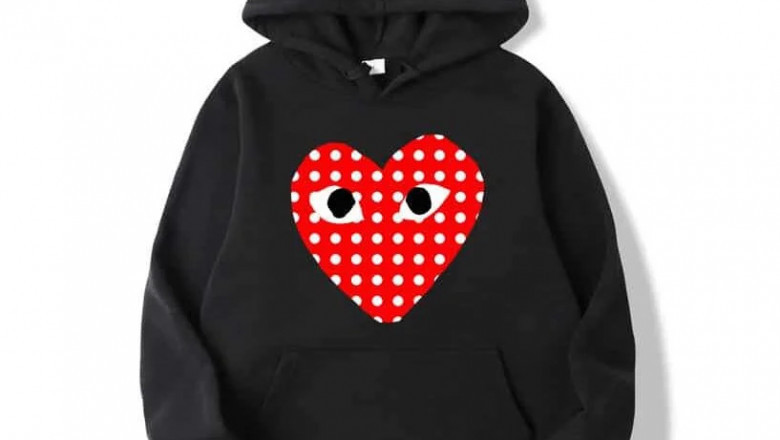views
comm des garcons
Comme des Garcons, a name that resonates with innovation and rebellion in the fashion world, is one of the most influential and unconventional brands of the modern era. Founded in Tokyo in 1969 by the visionary designer Rei Kawakubo, the brand—whose name translates from French as "Like Boys"—has consistently defied norms, challenged traditional aesthetics, and redefined the boundaries of fashion. Unlike mainstream luxury brands that prioritize beauty and wearability, Comme des Garçons embraces imperfection, asymmetry, and intellectual depth, making it a cornerstone of avant-garde fashion.
Over the past five decades, Comme des Garçons has grown from a small Japanese label into a global phenomenon, influencing designers, artists, and cultural movements. Kawakubo’s fearless approach to design has earned her a place among fashion’s greatest disruptors, alongside figures like Yohji Yamamoto and Martin Margiela. This essay explores the origins of Comme des Garçons, its defining characteristics, key collections, sub-labels, collaborations, and its lasting impact on the fashion industry.
The Origins and Philosophy of Comme des Garçons
Rei Kawakubo: The Enigmatic Visionary
Rei Kawakubo, born in Tokyo in 1942, did not originally set out to become a fashion designer. She studied fine arts and literature at Keio University before working in advertising and freelance styling. Her lack of formal fashion training may have contributed to her unorthodox approach—she saw clothing not just as garments but as a medium for artistic and philosophical expression.
In 1969, she founded Comme des Garçons, initially designing women’s wear that contrasted sharply with the bright, feminine styles of the time. By the late 1970s, her work gained attention in Japan, and in 1981, she made her explosive Paris debut, shocking the fashion world with her all-black, deconstructed collection.
The Anti-Fashion Ethos
Kawakubo’s philosophy rejects conventional beauty standards. Instead, she explores themes of:
-
Deconstruction – Garments that appear unfinished, with exposed seams, raw edges, and asymmetrical cuts.
-
Gender Fluidity – Blurring the lines between masculine and feminine fashion.
-
Conceptual Storytelling – Each collection tells a story, often abstract and open to interpretation.
-
Emotional and Intellectual Engagement – Her designs provoke thought rather than simply adorning the body.
Her famous statement, "I work with three words: not, never, and no," encapsulates her defiance of trends and commercial expectations.
Key Collections and Defining Moments
1. The 1981 Paris Debut: "Hiroshima Chic"
Kawakubo’s first Paris Fashion Week show in 1981 was a cultural earthquake. Critics dubbed it "Hiroshima Chic" due to its distressed fabrics, monochromatic palette (primarily black), and unconventional silhouettes. The collection challenged Western ideals of glamour, introducing a new language of fashion rooted in rawness and emotion.
2. The 1997 "Body Meets Dress, Dress Meets Body" (Lumps and Bumps Collection)
One of her most controversial collections featured padded garments that distorted the body’s natural shape, creating unnatural lumps and curves. This collection questioned societal beauty standards and the very notion of how clothing interacts with the human form.
3. The 2012 "2 Dimensions" Collection
This collection played with optical illusions, featuring flat, graphic prints that made three-dimensional garments appear two-dimensional. It showcased Kawakubo’s ability to merge fashion with visual art.
4. The 2017 Met Gala Exhibition: "Art of the In-Between"
The Metropolitan Museum of Art honored Kawakubo with a solo exhibition, a rare distinction for a living designer. The exhibit explored her work as existing in the spaces between conventional dichotomies—male/female, beauty/ugliness, fashion/art.
Sub-Labels and Expansions
Comme des Garçons is not just a single brand but an expansive universe of sub-labels, each catering to different aesthetics and markets:
1. Comme des Garçons PLAY
The most accessible line, featuring the iconic heart logo designed by artist Filip Pagowski. It includes casual wear like T-shirts, sweaters, and sneakers, making avant-garde fashion more wearable for everyday consumers.
2. Comme des Garçons Homme
The menswear line, equally experimental, often playing with oversized tailoring, unexpected textures, and gender-neutral designs.
3. Comme des Garçons Noir
A gothic-inspired line focusing on dark, romantic aesthetics with intricate detailing.
4. Comme des Garçons SHIRT
A line dedicated to reinvented shirting, featuring bold prints, exaggerated collars, and unconventional cuts.
5. Dover Street Market
Kawakubo and her partner Adrian Joffe founded this avant-garde retail concept, housing not just Comme des Garçons but other boundary-pushing designers. Stores in London, Tokyo, New York, and Beijing serve as hubs for experimental fashion.
Iconic Collaborations
Comme des Garçons has partnered with numerous brands, bridging high fashion with streetwear and luxury:
-
Nike & Converse – The CDG x Converse Chuck Taylor sneakers became a cult favorite, blending Kawakubo’s minimalist aesthetic with streetwear.
-
Louis Vuitton (2008) – A groundbreaking collaboration that merged LV’s luxury with CDG’s avant-garde edge.
-
H&M (2008) – Brought Comme des Garçons to a mass audience, selling out within hours.
-
Moncler (2023) – Reinvented puffer jackets with CDG’s signature deconstructed style.
Cultural Impact and Legacy
Influence on Designers
Kawakubo’s work has inspired countless designers, including:
-
Martin Margiela – Known for deconstruction and anti-fashion statements.
-
Rick Owens – Embraces dark, sculptural, and gender-fluid designs.
-
Demna Gvasalia (Balenciaga, Vetements) – Adopts oversized silhouettes and anti-luxury aesthetics.
Fashion as Art
Comme des Garçons has blurred the line between fashion and art, with exhibitions in major museums like the Met and the Barbican. Kawakubo’s work is studied in fashion schools worldwide as a prime example of conceptual design.
Challenging Consumerism
Unlike brands that chase trends, Comme des Garçons remains fiercely independent, prioritizing creativity over commercial success. Kawakubo rarely gives interviews, letting her work speak for itself.
Conclusion: The Enduring Power of Comme des Garçons
Comme des Garçons is more than a fashion brand—it is a radical artistic movement that continues to challenge, provoke, and inspire. Rei Kawakubo’s refusal to conform has cemented her legacy as one of the most important designers in history. In a world where fashion often prioritizes profit over originality, Comme des Garçons remains a beacon of fearless creativity, proving that true innovation lies in breaking all the rules.














Comments
0 comment